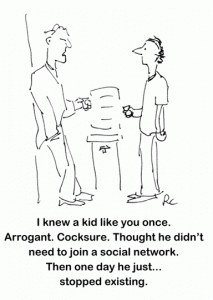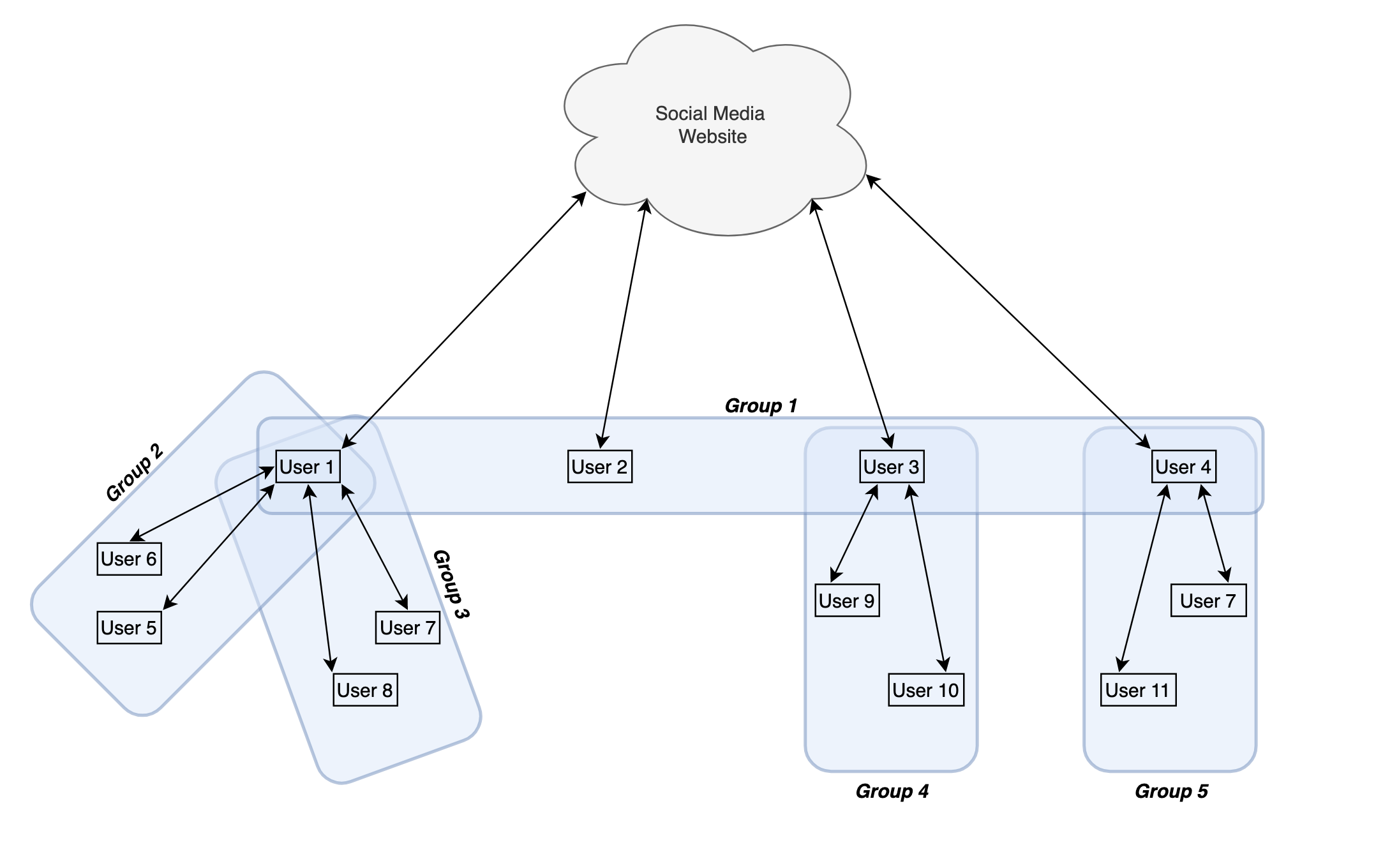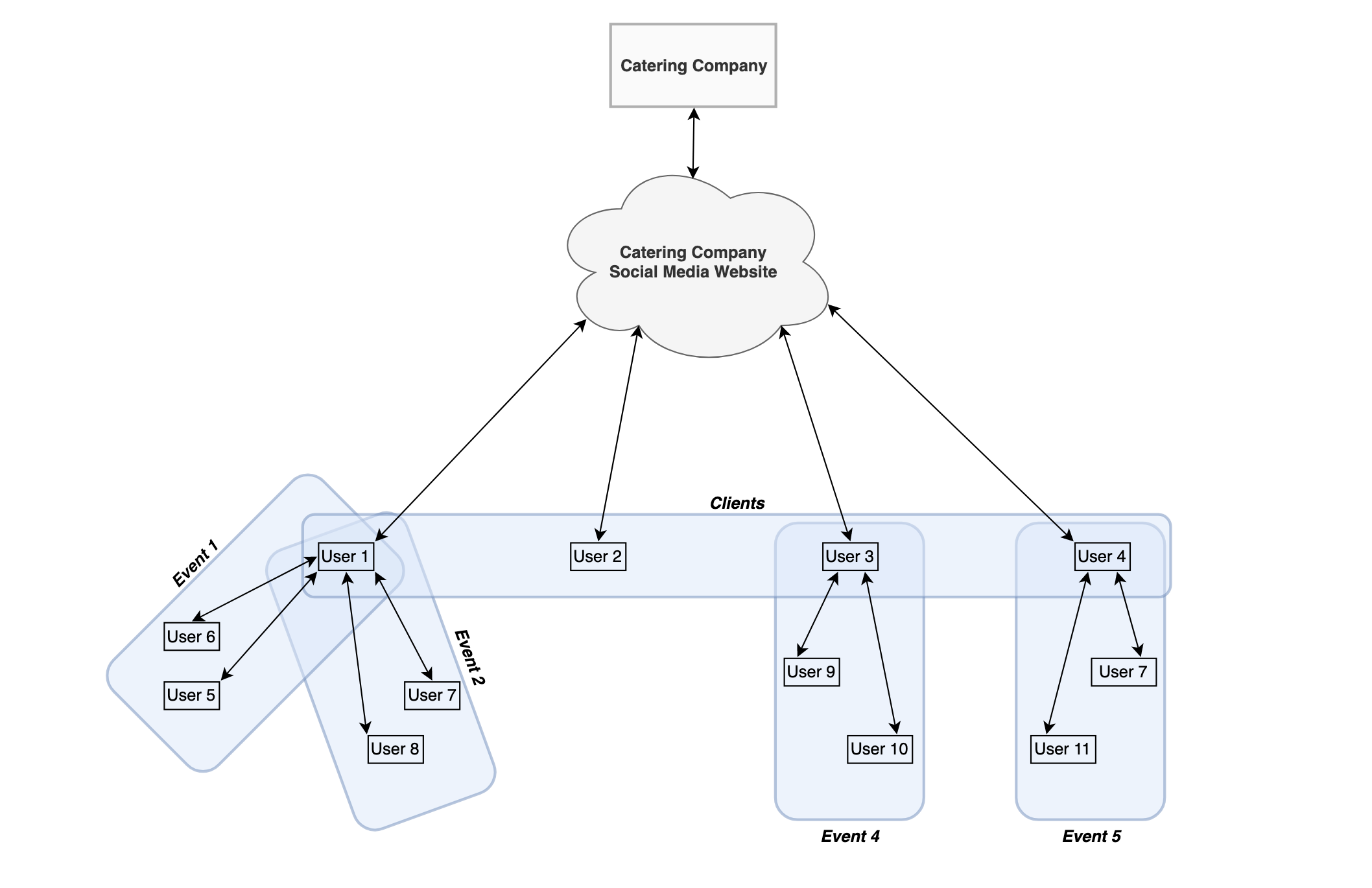Social Media Information Systems

Cartoon: Survival in the Workplace
Author: Rob Cottingham
This work is licensed under a Creative Commons Attribution-Noncommercial-Share Alike 2.5 Canada
Social Media – The use of information technology to support the sharing of content among networks of users.
Communities, Tribes, Hives
- Group of people related by a common interest
- SMIS is an information system that supports sharing of content across a network (Tribe, Community, or Hive)
Per Anthropologists – Ability to form communities Is responsible for the progress of the human race.
- Tribal Roots, Survival
- Affinity (groups) analysis highly prized
Affinity – Group decision making based on a poll or survey
What is this?
Use for Prioritizing, Requirements Gathering, if a group of peers comes to agreement independently we tend to value the outcome highly.
If a group agrees without discussion we go with it?
Do we trust “friends”: more than marketing materials?
Crowdfunding, Foursquare, etc.
af·fin·i·ty
əˈfinədē/
noun
plural noun: affinities
A spontaneous or natural liking or sympathy for someone or something.
“he has an affinity for the music of Berlioz”
Synonyms: empathy for, rapport with, sympathy for, accord with, harmony with, relationship with, bond with, fellow feeling for, closeness with/to, understanding of/for;
Affinity analysis is a data analysis and data mining technique that discovers co-occurrence relationships among activities performed by (or recorded about) specific individuals or groups.
- Social Media Providers
- Users
- Include both individuals and organizations that use SM sites to build social relationships.
- Organizations are SM users too. You may not think of an organization as a typical user, but in many ways it is. Organizations create and manage SM accounts just like you do. It’s estimated that 77 percent of Fortune 500 companies maintain active Twitter accounts; 70 percent have Facebook pages, and 69 percent have YouTube accounts. These companies hire staff to maintain their SM presence, promote their products, build relationships, and manage their images.
- Communities
- SM communities is that they are formed based on mutual interests and transcend familial, geographic, and organizational boundaries.
- Belong to multiple communities?

- To attract users a Viral Hook may be used to connect to nested tiers of community.
- However if fixing a problem, may prefer to not attract attention
- Social Media Sponsors – support a presence, likely heavily invested.
- Social Media Application Providers – provide the sites/apps
- Can be hosted internally – like internet – MS SharePoint, etc.
Can be analyzed using our IS 5 component model:
Hardware
- User – Laptop, Desktop Phone, Pad
- Provider – Cloud Resources – elastic
Software – add remove connections & read and submit data
- User – Browser and native apps
- Providers – Proprietary
- Database – Proprietary – nonrelational, NOSQL, or relational
Data
- Content – contributed data and responses to posted data (Many types of web sits)
- Connection – relationships , friends, likes – only Social Networking applications store an process connection data. Information about the data and interrelationships.
Procedures – Informal, evolving and socially oriented. May be conventions. As the tribe learns so do you.
People – Users d what they want, relatively unencumbered. Behavior may not be rational
Costs – Not free. Maybe free to community, not for sponsors, businesses
If costs – why do business engage?
Relationship of Systems to Organizational Strategy
- Strategy determines value (chains)
- Value determines business processes
- Business processes determine Information Systems
Gossieaux and Moran= 2 type of communities (affinities)
- Defenders of Belief – Share a common belief- form a community around that belief. (What does this sound like?) Seek Conformity and convince others of their wisdom.
- Seekers of Truth –Share a common desire to learn something, solve a problem, or enact change (make something happen.) Affinity analysis, Wikipedia – enough input leads to truth?
CRM – Social CRM – disconnect to traditional CRM
- Traditional CRM is based on Lifetime Customer Value. Customer that are likely to generate the most business get the most attention.
- Relationships emerge form joint/group activity not controlled by the manufacturer.
- Online posters have equal say no matter how much/little they spend. No longer about Lifetime Customer Value.
- I can spend a dime ands till have power of platform on facebook.
- People trust their friends 90% of the time, but marketing promotions 14% of the time?
- However traditional managers are happy to have loyal customers sell their products to their peers using SMIS.
- A quick look at products and their reviews on Amazon.com will show how frequently customers are willing to write long, thoughtful reviews of products they like or do not like.
Customer Service
- Users with no financial incentive are also willing to help others. Amazon.com supports a program called Vine by which customers can be selected to give prerelease and new product reviews to the buyer community. You’ll need your psychology course to explain what drives people to strive for such recognition. MIS just provides the platform!
- MVP (most valued professional). Build forum, knowledgebase. People like to show their Expertise.
Manufacturing and Inbound/Outbound Logistics
Supply chains are tightly integrated with manufacturing process less opportunity for adaptive processes.
- Problem Solving is the exception
- Crowdsourcing = Solving problems
- For instance, the Japanese earthquake in the spring of 2011 created havoc in the automotive supply chain when major Japanese manufacturers lacked power and, in some cases, facilities to operate. Social media was thus used to dispense news, allay fears of radioactive products, and address ever-changing needs and problems.
HR – Glassdoor, rate my teacher, professor (be kind). Offer benefit of shared experience.
Social Capital
- According to Nan Lin, social capital is investment in social relations with the expectation of returns in the marketplace.11 You can see social capital at work in your personal life. You strengthen your social relationships when you help someone get a job, set a friend up on a date, or introduce a friend to someone famous. You weaken your social relationships by continually freeloading, declining requests for help, or failing to spend time with friends.
- In your professional life, you are investing in your social capital when you attend a business function for the purpose of meeting people and reinforcing relationships. Similarly, you can use social media to increase your social capital by recommending or endorsing someone on LinkedIn, liking a picture on Facebook, retweeting a tweet, or commenting on an Instagram picture.
According to Henk Flap, The Value of social capital = number of relationships x strength of relationships x resources controlled by those related.

Email address Myname@ company.com, used to be the other way around. With blogs and FB sites now it is by name and company may be afterthought. Organizations become more internalized and employees become the outer shell?
How to connect to those with More assets?
Find influencers:
Social Media Leadership?
Fashion – example
Playlists
How to Manage Risks:
Control – Social Media Policy
Patrol – Watchers
Decide on response.
Growing Social Networks

Commercial television delivers 20 million people a minute.
In commercial broadcasting the viewer pays for the privilege of having himself sold.
It is the consumer who is consumed.
You are the product of t.v.
You are delivered to the advertiser who is the customer.
He consumes you.
The viewer is not responsible for programming——
You are the end product.
– Richard Serra 1973
If you’re getting the service for free, then you’re the product. Those servers and all the infrastructure and engineers cost money. So, you’re paying by them looking for keywords in your email and popping ads up.
Which is familiar to anyone who’s had a sneaker ad follow them around online.
Yeah a friend of mine told me through text message what hotel he was going to be staying at in Nashville, and the next thing I know, there’s an ad for it on my Facebook page. It’s all tied together.
Mike Judge 2018
Revenue Models
- Direct market to Connections
- Advertising
- Freemium

